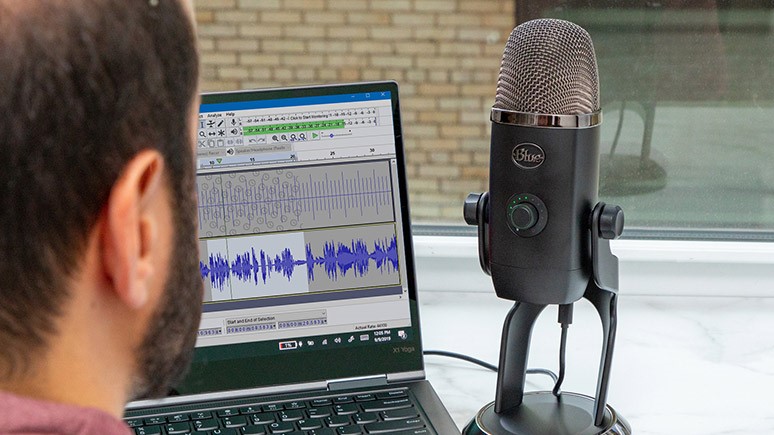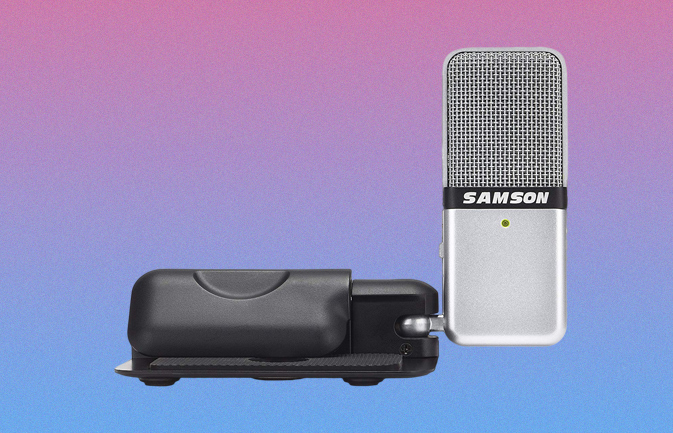Best USB Microphones
Looking to record music or stream a podcast? Here are the best USB microphones to choose from.

Whether you picked up a regular old laptop to record a podcast or a gaming machine to stream the latest indie craze, you're going to need the best USB microphone to deliver your lovely voice to the audience.
First: Understand that there are generally four recording modes you can find in the best USB microphones: cardioid, bidirectional, omnidirectional and stereo. You need to know which one best suits your needs before you pick out a microphone.
Cardioid records sources that are in front of the microphone (good for streaming); bidirectional is front and back (good for a two-person podcast); omnidirectional is each direction (good for multi-person podcasts or conference calls); and stereo builds off omnidirectional by using both left and right channels (good for musical instrumentals and ASMR).
Here are the best USB microphones
Why you can trust Laptop Mag

Blue Yeti X
Specifications
Reasons to buy
The Blue Yeti X is the latest addition to Blue's family of microphone, and this ups the ante, not only with its additional condenser capsule, but with its badass Blue Voice settings, which can be adjusted via the Logitech G Hub app.
You get access to an overwhelming amount of settings that'll let you configure your audio on the fly, so you don't even have to deal with it in post. Not only that, but you can also monitor your levels with its customizable RGB lights.

Blue Yeti
Specifications
Reasons to buy
The Blue Yeti is one of the most popular USB microphones on the market. It features recording modes such as cardioid, bidirectional, omnidirectional and stereo. It also has on-the-spot gain control and a 3.5mm audio jack for headphones.
You can unscrew the microphone from the mount to attach a microphone stand to the bottom. The Blue Yeti has a simple plug-and-play setup that functions with Windows 10 and macOS. However, the mic is a bit chunky, so keep that in mind if you plan on traveling with it.

HyperX Quadcast
Specifications
Reasons to buy
If you're looking for a sleeker mic alternative, the HyperX Quadcast is the way to go. It offers the same features as the Blue Yeti, such as four recording modes, gain control and a headphone jack.
But unlike the Blue Yeti, it features an internal pop filter, which'll reduce "popping" sounds, and a shock mount, which suppresses unintentional rumbles. On top of the microphone is a tap-to-mute sensor. And it's not only compatible with Windows 10 and macOS, but also with PS4.

Razer Seiren X
Specifications
Reasons to buy
If you're looking to spend less, you can go with the Razer Seiren X. Like the Yeti and Quadcast, the Seiren X has a simple plug-and-play setup for Windows 10 and macOS.
However, the Seiren X packs only a single recording mode: supercardioid. This is a tighter version of cardioid that eliminates more background noise. The Seiren X doesn't have an adapter (3/8 to 5/8 inch) to attach to a boom arm, either, so you'll have to purchase that separately.

Blue Yeti Nano
Specifications
Reasons to buy
If you're sticking to Blue because you like the brand but still want to save a little extra money, the Blue Yeti Nano is your next best choice. Unlike the Razer Seiren X, the Yeti Nano comes with a 3/8- to 5/8-inch adapter to connect to a boom arm. It also features both cardioid and omnidirectional recording modes. It has a 3.5mm audio jack for headphone monitoring, but it doesn't have any onboard gain controls.

Samson Go
Specifications
Reasons to buy
The Samson Go is a solid choice if you're on a tight budget. It offers cardioid and omnidirectional recording modes, a 3.5mm audio jack and a fold-up design with a clip that can attach to your laptop's screen.
Its compact design makes it easy to take with you anywhere, hence the "Go." However, considering the size of the microphone, you're bound to get a lower quality recording.
Sign up to receive The Snapshot, a free special dispatch from Laptop Mag, in your inbox.

Rami Tabari is the Reviews Editor for Laptop Mag. He reviews every shape and form of a laptop as well as all sorts of cool tech. You can find him sitting at his desk surrounded by a hoarder's dream of laptops, and when he navigates his way out to civilization, you can catch him watching really bad anime or playing some kind of painfully difficult game. He’s the best at every game and he just doesn’t lose. That’s why you’ll occasionally catch his byline attached to the latest Souls-like challenge.
